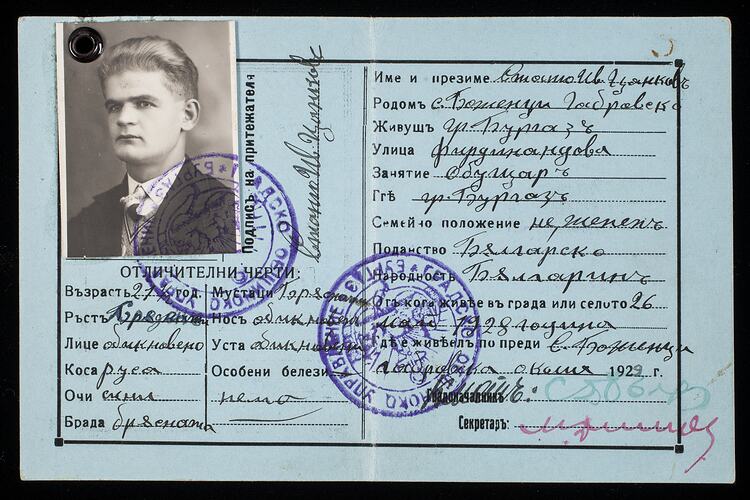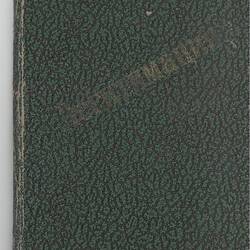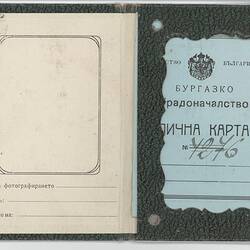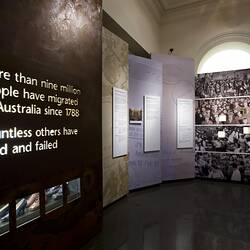Summary
Passport which belonged to Stanio Fancoff and was used when he migrated from Bulgaria to Australia in 1929. It includes Stanio's passport photograph and provides his personal details and passport date of 1929. The passport was required for Stanio's immigration to Australia and an integral part of his immigration story.
Stanio Ivanoff Fancoff was born in 1908 in Bojentsi, a small village in Bulgaria. At age 11, Stanio left home to learn the shoemaking trade. In 1929, he immigrated to Melbourne, settled in Fitzroy and began to work for the V.G. Zemancheff & Sons basket shoe factory in South Melbourne. In 1936, he married Dorotea Georgi Touzou who had recently arrived in Australia. Around this time, Stanio set up his own shoemaking business from home, with Georgi, her cousin and sister weaving the shoes which he then assembled. Selected shoe samples were then taken to Sydney and Tasmania for sale. In 1942, Georgi and Stanio moved to Broken Hill for Georgi's health; daughter Nancy was born there and Stanio set up a shoe shop/factory. In 1945, Georgi died and by 1950 Stanio and Nancy had moved to Adelaide where he again opened a shoemaking business and shop. He passed away in 1978, having been in the shoemaking business for 59 years.
Physical Description
This object comprises passport and passport cover. All text is written in Bulgarian script. Passport cover is green patent leather with a snake skin styled pattern and folds out into a three sectioned book. Front cover has gold imprinted letter within a diagonal line upon it; two hole punctures within its upper and lower left hand corners. Passport printed on blue paper this document is centre- folded to provide a book format. Includes passport photograph, black printed and handwritten text, two round purple stamps.
Significance
This collection is significant in documenting a small migrant business as well as the fashion of a particular period. It is well provenanced and charts the application of trade skills in a new country. It also illustrates the stages of hand shoe manufacture from the 1930s, demonstrating the enduring nature of the tools and patterns that were used.
More Information
-
Collecting Areas
-
Acquisition Information
Donation from Nancy Vasileff, 21 Mar 2007
-
Issued To
-
Inscriptions
Front Cover, Imprinted, Gold, Text: Internal, Black Printed and Handwritten Text. Back Cover, Stamped, Pink Print and Grey handwritting.
-
Classification
Migration, Processing - planning & departure, Identification
-
Category
-
Discipline
-
Type of item
-
Overall Dimensions
85 mm (Width), 122 mm (Height)
-
References
R.A. Salaman, 'Dictionary of Leather-working Tools c.1700-1950 and Tools of Allied Trades,' London: George Allen and Unwin (Publishers) Ltd, 1986 [Section 2: Boot and Shoe Maker pp18-185]. John Peacock. 'Shoes, The Complete Sourcebook,' London:Thames & Hudson Ltd, 2005. NAA holds file (online) on Vasil George Zemancheff, Fancoff's employer
-
Keywords
Boot & Shoemaking, Bulgarian Communities, Bulgarian Immigration, Immigration, Small Businesses, Travel, Identifications






